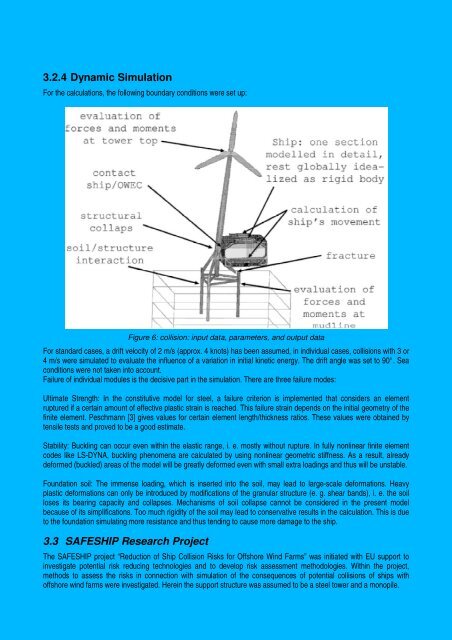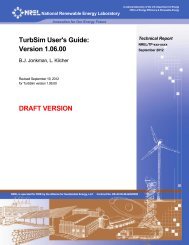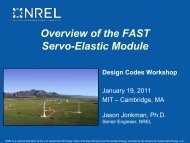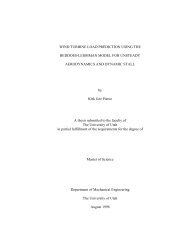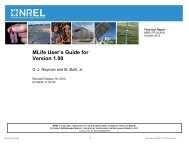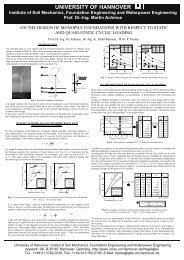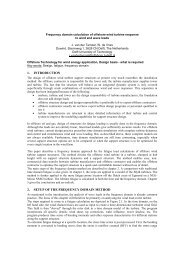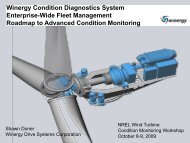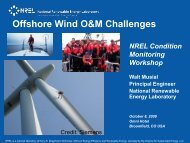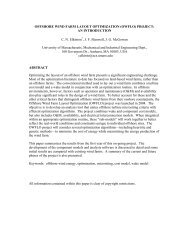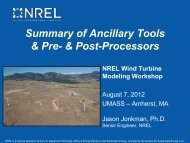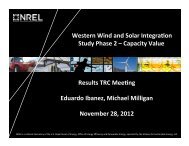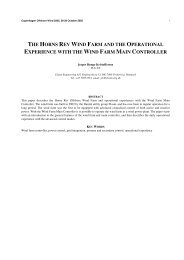Ship Collision, Risk analysis - Emergency systems - Collision ...
Ship Collision, Risk analysis - Emergency systems - Collision ...
Ship Collision, Risk analysis - Emergency systems - Collision ...
You also want an ePaper? Increase the reach of your titles
YUMPU automatically turns print PDFs into web optimized ePapers that Google loves.
3.2.4 Dynamic Simulation<br />
For the calculations, the following boundary conditions were set up:<br />
Figure 6: collision: input data, parameters, and output data<br />
For standard cases, a drift velocity of 2 m/s (approx. 4 knots) has been assumed, in individual cases, collisions with 3 or<br />
4 m/s were simulated to evaluate the influence of a variation in initial kinetic energy. The drift angle was set to 90°. Sea<br />
conditions were not taken into account.<br />
Failure of individual modules is the decisive part in the simulation. There are three failure modes:<br />
Ultimate Strength: In the constitutive model for steel, a failure criterion is implemented that considers an element<br />
ruptured if a certain amount of effective plastic strain is reached. This failure strain depends on the initial geometry of the<br />
finite element. Peschmann [3] gives values for certain element length/thickness ratios. These values were obtained by<br />
tensile tests and proved to be a good estimate.<br />
Stability: Buckling can occur even within the elastic range, i. e. mostly without rupture. In fully nonlinear finite element<br />
codes like LS-DYNA, buckling phenomena are calculated by using nonlinear geometric stiffness. As a result, already<br />
deformed (buckled) areas of the model will be greatly deformed even with small extra loadings and thus will be unstable.<br />
Foundation soil: The immense loading, which is inserted into the soil, may lead to large-scale deformations. Heavy<br />
plastic deformations can only be introduced by modifications of the granular structure (e. g. shear bands), i. e. the soil<br />
loses its bearing capacity and collapses. Mechanisms of soil collapse cannot be considered in the present model<br />
because of its simplifications. Too much rigidity of the soil may lead to conservative results in the calculation. This is due<br />
to the foundation simulating more resistance and thus tending to cause more damage to the ship.<br />
3.3 SAFESHIP Research Project<br />
The SAFESHIP project “Reduction of <strong>Ship</strong> <strong>Collision</strong> <strong>Risk</strong>s for Offshore Wind Farms” was initiated with EU support to<br />
investigate potential risk reducing technologies and to develop risk assessment methodologies. Within the project,<br />
methods to assess the risks in connection with simulation of the consequences of potential collisions of ships with<br />
offshore wind farms were investigated. Herein the support structure was assumed to be a steel tower and a monopile.


